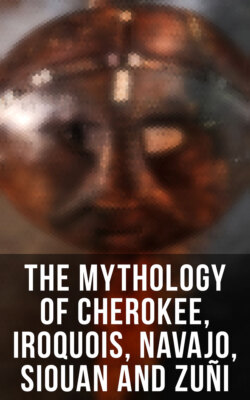Читать книгу The Mythology of Cherokee, Iroquois, Navajo, Siouan and Zuñi - James Mooney - Страница 17
На сайте Литреса книга снята с продажи.
Affinities with Siberian Peoples
ОглавлениеAs has already been indicated, careful observers have repeatedly remarked upon the strong likeness between the American races and those of North-eastern Asia. This likeness is not only physical, but extends to custom, and to some extent to religious belief.
"The war-dances and medicine customs of the Ostiaks resemble those of the Kolusches even to the smallest details, and the myth of a heaven-climber, who ascends the sky from a lofty tree, lowering himself again to earth by a strip of leather, a rope of grass, a plait of hair, or the curling wreath of smoke from a hut, occurs not only among the Ugrian tribes, but among the Dogrib Indians. Such myths, it is contended, though insufficient to prove common descent, point to early communications between these distant stocks. Superstitious usages, on the other hand, it is argued, are scarcely likely to have been adopted in consequence of mere intercourse, and indicate a common origin. Thus, among the Itelmians of Kamchatka it is forbidden to carry a burning brand otherwise than in the fingers; it must on no account be pierced for that purpose with the point of a knife. A similar superstition is cherished by the Dakota. Again, when the tribes of Hudson Bay slay a bear they daub the head with gay colours, and sing around it hymns having a religious character; it is understood to symbolize the spirit of the deceased animal. A similar practice, it is said, prevails throughout Siberia, and is met with among the Gilyaks of the Amur, and the Ainu. The Ostiaks hang the skin of a bear on a tree, pay it the profoundest respect, and address it while imploring pardon of the spirit of the animal for having put it to death; their usual oath, moreover, is 'by the bear,' as the polished Athenians habitually swore 'by the dog.' Earthen vessels, it is further urged, were manufactured not only by the Itelmians, but by the Aleutians and the Kolusches of the New World; whereas the Assiniboins, settled farther to the southward, cooked their flesh in kettles of hide, into which red-hot stones were cast to heat the water."2
